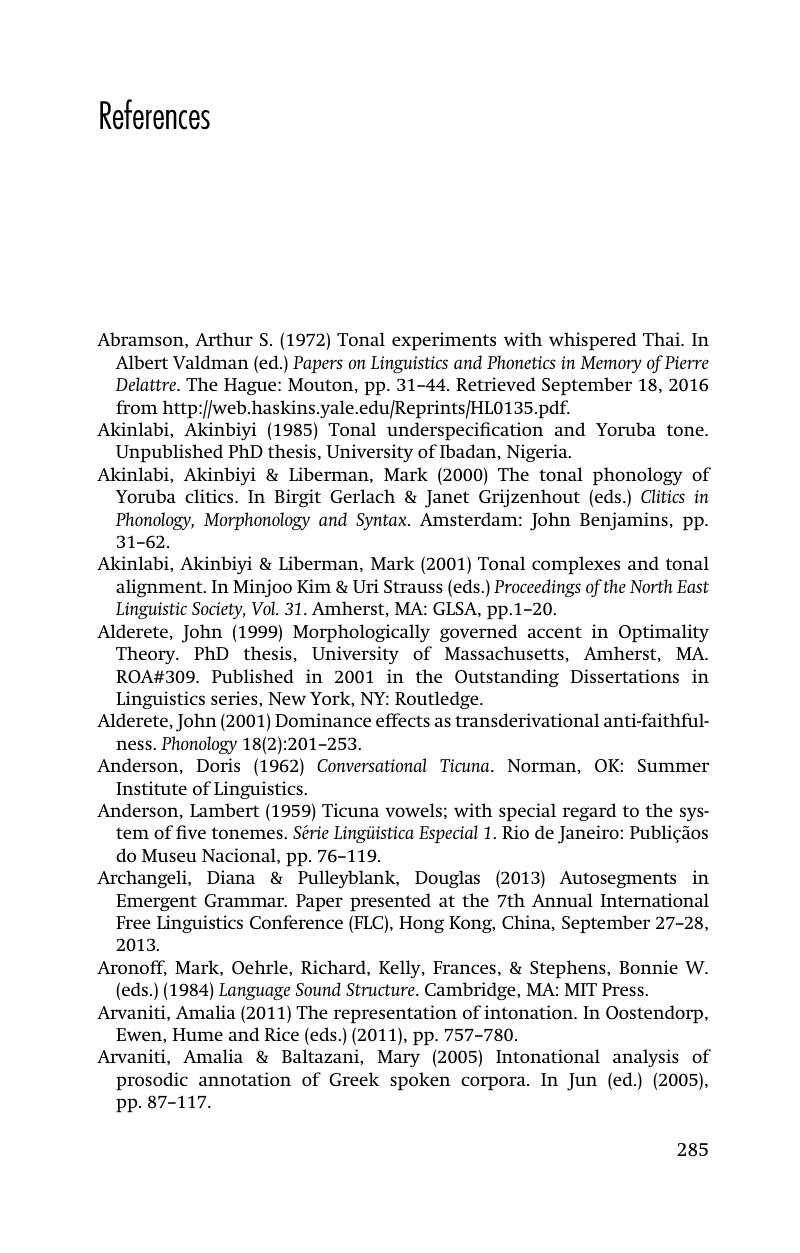Book contents
- Phonological Tone
- Key Topics in Phonology
- Phonological Tone
- Copyright page
- Dedication
- Contents
- Figures
- Tables
- Preface
- Acknowledgments
- 1 Tone Basics
- 2 Autosegmentality and Associations
- 3 Discovery of Tone and Sub-Tonal Entities
- 4 Tone Sandhi I: Phonetic or Phonological?
- 5 Tone Sandhi II: Phonological Analyses
- 6 Interaction: Segments to Prosody
- 7 Cognitive Aspects of Tone
- Glossary
- References
- Language Index
- Subject Index
- References
References
Published online by Cambridge University Press: 21 February 2019
- Phonological Tone
- Key Topics in Phonology
- Phonological Tone
- Copyright page
- Dedication
- Contents
- Figures
- Tables
- Preface
- Acknowledgments
- 1 Tone Basics
- 2 Autosegmentality and Associations
- 3 Discovery of Tone and Sub-Tonal Entities
- 4 Tone Sandhi I: Phonetic or Phonological?
- 5 Tone Sandhi II: Phonological Analyses
- 6 Interaction: Segments to Prosody
- 7 Cognitive Aspects of Tone
- Glossary
- References
- Language Index
- Subject Index
- References
Summary

- Type
- Chapter
- Information
- Phonological Tone , pp. 285 - 315Publisher: Cambridge University PressPrint publication year: 2019

